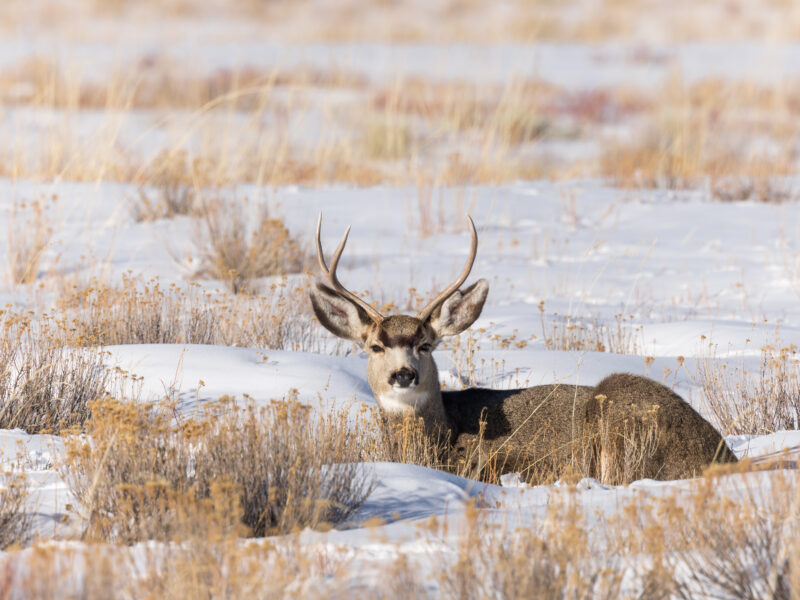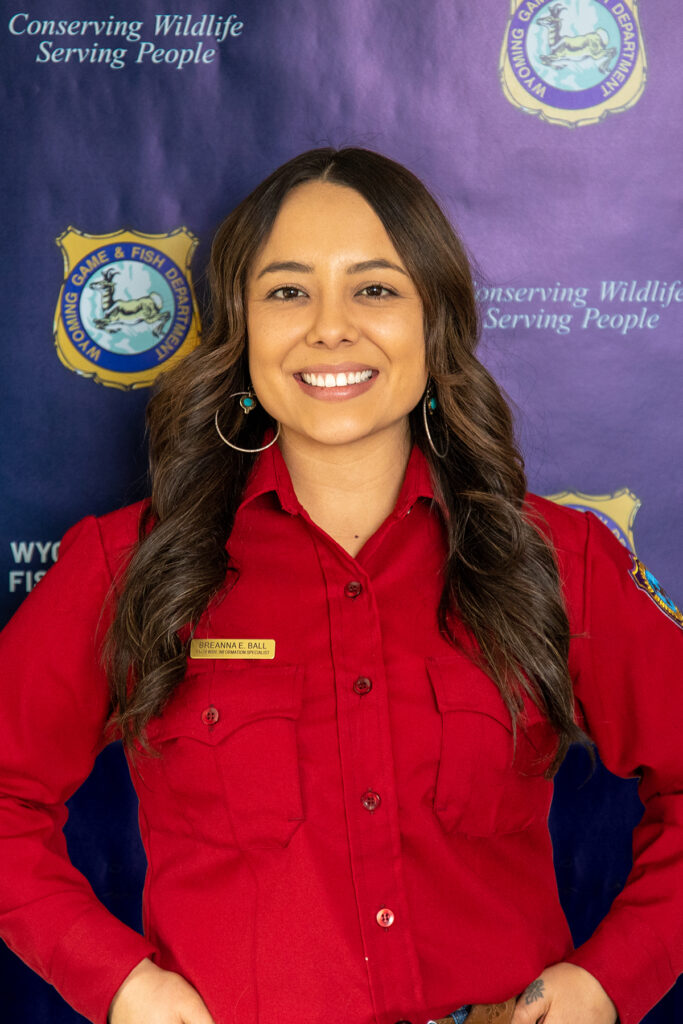Chronic Wasting Disease Found in Elk in Cody Hunt Area for the First Time
Wyoming Game & Fish Department officials increase monitoring of the disease
- Published In: Other News & Features
- Last Updated: Nov 06, 2023

Although the causes are not yet known, mule deer have been impacted more severely by chronic wasting disease, a fatal neurological disorder, than populations of whitetail deer, elk or moose. (Courtesy photo from Wyoming Game & Fish Department)
By K.L. McQuaid
Special to the Wyoming Truth
Wyoming wildlife officials have detected chronic wasting disease (CWD) in a harvested elk in a hunting area near Cody for the first time, sparking renewed interest in the deadly disorder and what can be done to limit its spread.
The discovery of the disease in a hunter’s bull elk early last month in Area 58, which borders areas where the illness had previously been found in the animals, has prompted Wyoming Game & Fish Department officials to step up efforts to inform hunters and the public at large.
“While it’s not a big surprise that the disease was found in this area, it’s prompted the department to be even more vigilant in its monitoring and communications,” Breanna Ball, a department spokeswoman, told Wyoming Truth.
CWD is a neurological illness that affects the central nervous systems of elk, mule, whitetail deer and moose and is transmitted through bodily fluids and the environment. It is always fatal and there is no known treatment.

And while infected animals often suffer from weight loss, an inability to walk properly, lack of appetite and droopy ears, many display no symptoms until their illness is very advanced. Moreover, disease-carrying prions – proteins that trigger cellular death in animals – can linger in the environment for as long as 16 years. Scientists have yet to identify a way to destroy them.
To date, CWD has not jumped to humans, though the Centers for Disease Control and Prevention and the World Health Organization encourage people not to eat infected animals, Ball said. Some studies point to a risk to people, however, leading the department to recommend they prevent or avoid exposure to CWD.
The presence of CWD comes as the disease is spreading throughout Wyoming and Western states. To date, it has been found in 31 states and Canada. The disease was first identified in Wyoming in the Laramie Mountains in the 1970s and began impacting mule deer – the animal most susceptible to the disease – in 1985. CWD tends to affect deer more than elk and bucks more than does, research suggests.
“We’re still learning a lot about the disease, but what is clear is that it affects the health and viability of some of Wyoming’s most iconic mule deer herds,” Ball said.
Today CWD is most prevalent in the southeast portion of the state and in the Bighorn Basin.
Hunters play a critical role
To limit the spread, the department has instituted mandatory CWD testing in six deer hunt areas – 41, 47, 88, 89, 157 and 171 – and established several ways hunters can voluntarily test harvested animals at department game check field stations and at regional offices statewide.
“There was a lot of concern at first that resident hunters would push back on the idea of mandatory testing, but it’s been a lot more well received than I think anyone anticipated,” said Sy Gilliland, founder of the Casper-based SNS Outfitter and Guides, the state’s largest outfitter and among its oldest.
“But sportsmen tend to abide by science and look at the facts,” added Gilliland, who was part of a statewide task force a few years ago formed to study CWD and recommend policies to limit its spread.
Hunters also can do their own CWD testing by first extracting lymph nodes found in the necks of animals they harvest and sending those samples to the Wildlife Health Lab. State officials recommend quartering and freezing animal carcasses until results are returned. Animals found to be infected with CWD can be disposed of in landfills without penalty, Ball said. Wyoming Game & Fish maintains guidelines for how to conduct self-tests, limit possible exposure to CWD and properly clean equipment on its website.
In all, the department has spent $4.5 million to monitor and test over 92,000 samples for CWD, Ball said. Last year, 6,701 samples were tested and 826 animals were found to be infected – on par with the previous two years.
By comparison, roughly 6,700 animals die each year in Wyoming from vehicle collisions.
Ball said hunters play a critical role in limiting the spread of the disease by voluntarily testing harvested animals or having them tested and by reporting sick wildlife to the department.
“We’ve seen tremendous compliance and cooperation from within the hunting community. They see the value of providing samples, and we have a great appreciation for them as well as processors and taxidermists,” Ball said.
“Monitoring helps us understand the impact of the disease and aids in future management decisions,” she added. “We know eradication of this disease isn’t feasible, but it’s incumbent on us for long-term sustainability of the animals.”
To reward hunters’ cooperation, Wyoming Game & Fish also holds monthly raffles for those who provide samples, with prizes that include hunting rifles, scopes, backpacks and other gear.













